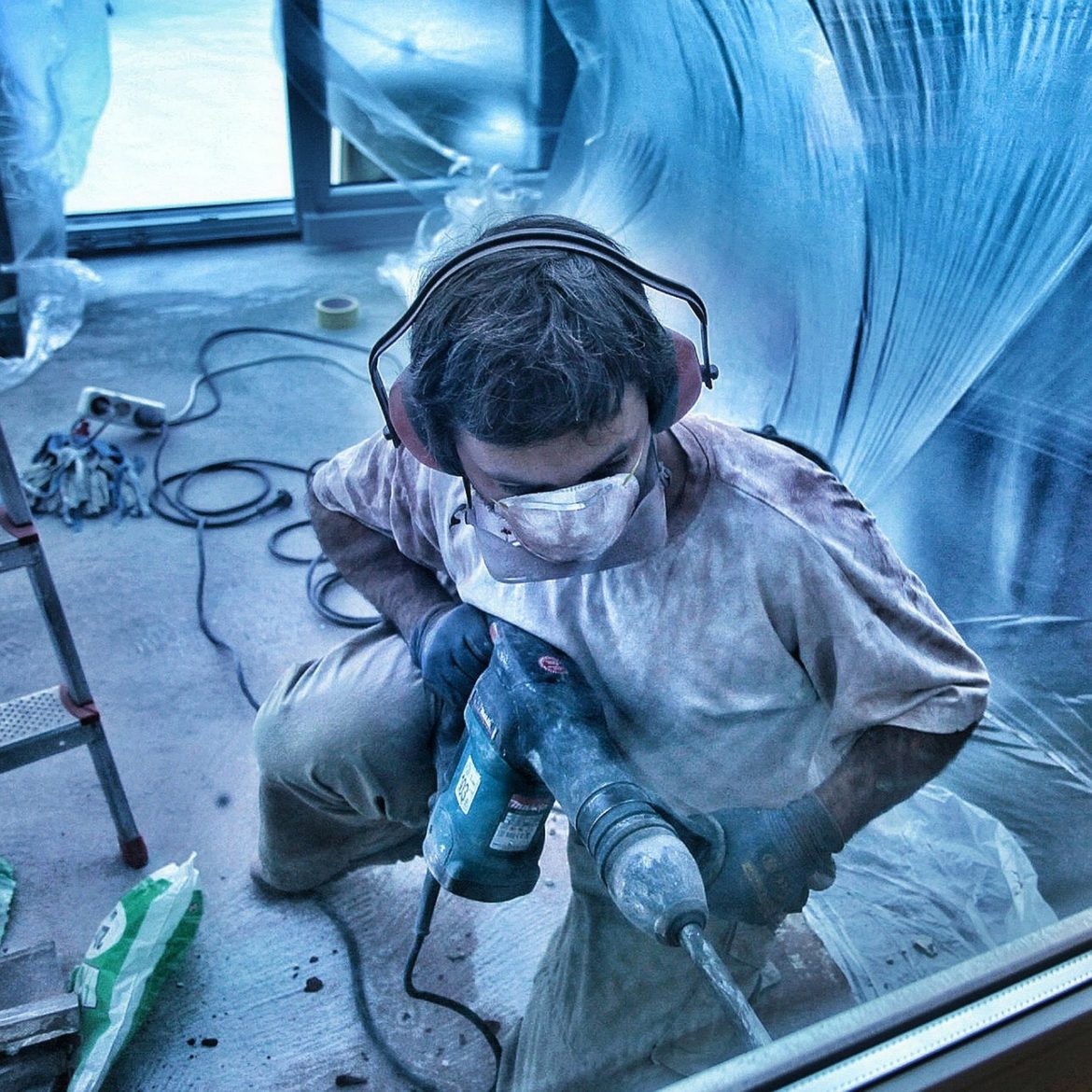You did your research, watched YouTube, talked to friends and experts, bought your tools and materials. Now you’re not even half-way through a project, out of steam and there’s no stopping point in sight. Unfortunately, this happens with many first attempts when it comes to DIY home improvement projects.
What do you do?
Well, a common outcome is that you give up and call a professional. And because you weren’t booked in advance with a properly negotiated bid, you end up paying a lot more than you budgeted and your timeline is ruined.
It looks like a lot of fun to go in swinging, and it is. Your first hit into something will give you a little rush and sense of toughness and pride for following through with an idea. The problem is that you might be making too many “first hits” into all the areas of your project, when they should be grouped into different steps. Real life example: a homeowner started to remove the tile in his kitchen himself. A few minutes in he saw there was more than one layer of flooring. Seeing this he started to take that out as well, but realized the baseboard would have a gap even with the new flooring being put in, so he began to take off the baseboard, knowing that should have been done anyway. Then he saw the flooring went under the cabinets. After running to Home Depot for a tool he removed the toe kicks and tried to cut around the cabinets. Before long he looked around and decided he was in over his head. There were too many mini-projects started, he was already tired and it wasn’t even noon. It’s not that this homeowner didn’t have a plan, there were just variables he didn’t account for. Even the best of professionals run into unexpected factors that throw everything off. That’s just construction. The difference is professionals have the experience, the tools and the manpower to have a procedure for almost every event.
So here are a few tips:
Rent a Dumpster
It makes a world of difference when you have somewhere to put debris right away. Having a deadline for when the dumpster will be leaving will motivate you to be more efficient as well.
Have the right tools
Almost every tool a professional has can be rented. Some basics are a chipping hammer with a tile chisel attachment, a surface grinder for remaining thin-set removal, angled grinder for doorways or room separation, crowbars, and a vacuum. Specialized dustless systems can be sort of mimicked by holding a Shop-vac up to your chippers. This would automatically make it a two-person job. Without the real thing you should also purchase barriers and microfiber cloths for stuffing vents and cleanup. Be sure to have gloves.
Finish One Task Before Starting Another
In general, start with the easiest task, which would be cabinets if you’re doing a kitchen/laundry/bathroom area. It’s fast and will give you a clean slate for the rest of the project. If you plan to keep cabinets, remove the toe kicks. Then do baseboards. Depending on how many layers of flooring you have, you may need to remove the baseboard, unless you plan on re-installing layers to maintain the same level. To see this, pull up an air vent and inspect the cross section. Normal material to look for is the tile, thin-set, wire mesh, backer board, concrete board like Hardie Backer and then the sub-floor. For radiant heating floors expect to see a product like Gypsum concrete. Remove one layer at a time.
Damage Control: Debris
Even if you start more than one project you can prevent becoming overwhelmed by controlling the debris. You’ll be able to move around easily and better see what needs to happen next. Have a (really good) friend help you, their sole job being picking up debris and moving it outside. You can also hire a neighborhood kids to do this.
Damage Control: Dust
Barrier off your working area to isolate the dust. Stuff air vents with microfiber cloths. Be sure to wear safety goggles, masks and create an airflow to the outside by leaving windows or direct doors open. Take breaks often and drink plenty of water/electrolyte drinks.
Establish a Stopping Point
Expect your demo to take more than one day, especially if it’s flooring. Plan on a stopping point if your day is quickly running out, or decide on a goal for each day. You can do this by room, by layer or you can use an angled grinder to create a clean line for your stopping point. If you are living in the space, clean any debris, thoroughly vacuum and put away your tools in a safe place. You can place a tarp or moving blankets on the line you cut to keep family members safe. Keep in mind, you will be more productive the next day seeing as much organization as possible.
Are You Ready?
Still undecided if you can really tackle the unknown? If all else fails you can budget to hire someone. Before you do, at the very least you should request bids from contractors that come to your space. You will be able to ask them about their tools, their route of action, and pick their brain about anything you can think of for your particular job. Here’s to your project. Wishing good luck and safety always.

